Do you have any students who struggle with decoding? Perhaps they don’t have the phonics knowledge they need to successfully read new words?
If so, this post will address exactly that! And it’s actually part of a complete series on supporting struggling readers.
Here are the other posts in the series:
- Causes of decoding difficulties in beginning readers
- How I analyze running records (to learn more about what readers need to work on)
- How I teach decoding strategies to struggling readers
- Phonological awareness intervention activities
And in this post, I’ll be focusing on phonics, the relationship between letters / letter patterns and sounds. Learning phonics comes easily for some students, but it can be a real challenge for others.
In this post, I’ll explain how to figure out if phonics is a “problem area” for a reader and make suggestions for phonics instruction during your literacy block. I’ll also provide ideas for specific phonics interventions to help your struggling decoders with phonics. Finally, I’ll describe how I help students apply their phonics learning to real reading – the ultimate goal!
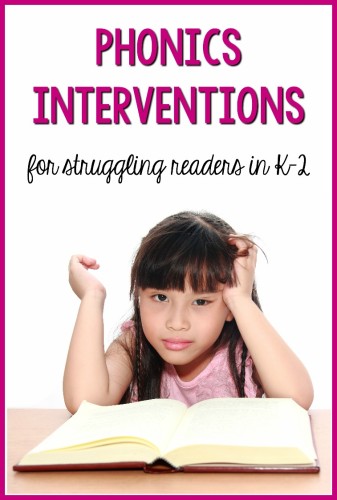
How to Know if Phonics Knowledge Is Contributing to Reading Difficulty
Decoding difficulties can be caused by many different factors. Sometimes, a child is struggling for multiple reasons. However, it’s always beneficial to figure out whether or not a struggling reader would benefit from more phonics support.
As I describe in my post from a few weeks ago, analyzing a student’s reading errors and self-corrections can be very helpful in determining what she needs to work on.
You can look for patterns in a child’s errors and ask yourself:
- Does the student ignore any parts of a word when decoding? (I.E. the middle or end?)
- Does the student take a long time figuring out what sound the letter(s) make?
- Is the student misreading a specific type of phonics pattern, like digraphs or blends?
- Does the student have a good handle on short vowels? Long vowels?
- Does the student look for patterns and recognize word chunks?
- How does the student handle multisyllabic words?
Another GREAT way to assess students’ phonics knowledge is with a phonics assessment that tests students’ ability to read and spell words with different patterns. You can grab one for free at this link!
Integrating Phonics Instruction into Daily Instruction
All students benefit from systematic, explicit phonics instruction – regardless of whether or not they are struggling readers.
I developed my phonics program, From Sounds to Spelling, because I wasn’t completely satisfied with the phonics program(s) I had available to me at the schools where I’ve taught. I wanted a program that was:
- Systematic and explicit
- Based on multi-sensory practice
- Easy to use, with center activities, decodable books, and plenty of materials
- FUN for kids!
You can read more about the program here.
Regardless of what phonics program you’re using, however, I recommend teaching a phonics skill to the entire group (whole group or small group), and then providing practice and follow-up activities that are differentiated.
Here’s an example: You’re working on blends in your first grade classroom. Some of your students need to practice hearing and spelling blends at the beginning of 1-syllable words, so you create opportunities for independent and small group practice. More advanced students, however, need to practice blends at the beginning AND end of a word, or blends in 2-syllable words. You use alternative activities and small group lessons to challenge these students.
It’s important to have a consistent time for phonics instruction each day (20-30 minutes). Phonics can also be addressed during small group / guided reading.
To read more about the routines that I include in my phonics block, check out this post.
Specific Phonics Intervention Activities for Struggling Students
No matter how awesome your whole-class and small group phonics instruction is, some students may still struggle. Those students will benefit from further practice with phonics concepts, in a one-on-one or small group setting. They also need many opportunities to apply this knowledge to reading real texts.
In the following sections, I’ll describe possible intervention activities for students who are struggling with letter sounds, CVC words, digraphs and blends, vowels, and inflectional endings. All of the materials described and pictured are completely FREE – just sign up here
Letter Sound Interventions
Students need to know their letter sounds in order to begin reading simple words. And they need to recall letter sounds quickly, in order to support fluent decoding.
When a young student is struggling with letter sounds, I first try to figure out if they are actually PERCEIVING the letters the way that they should be. Can they physically see the letters? Can they hear the letter sounds that I’m saying? A quick trip to the nurse for a vision and hearing check helps determine whether or not there are underlying physical causes for a child’s struggles.
I also check to make sure that the child can visually differentiate between alphabet letters. If the letters “o” and “c” look about the same to a student, then she won’t be successful with mastering the sounds they make.
If you find that a student is having trouble telling letters apart, try doing some magnetic letter sorts with her. First, sort by letter shapes. Show her how to put the “round ones” together, the “ones with sticks” together, and so on. When she has learned to do this type of sort independently, have her sort by actual letters. Font sorts can be helpful, too – mix up examples of two letters written in various fonts, and have her sort the two letters into groups. An example of this is included in today’s free download.
I teach letter names and sounds together. It’s not necessary to wait until a child has mastered one letter sound to move onto the next. I like to introduce about 2 letter sounds per week, and then move on to 2 new letter sounds the following week. I’ve found that students sometimes seem to learn a handful of letters at once, regardless of whether I taught them this past week or several weeks ago.
In my opinion, alphabet charts are one of the most helpful tools for teaching letter sounds (and letter names). At the beginning of each small group or intervention session, you can give students copies of an alphabet chart (included in this post’s
free download) and have them read it chorally.
There are many different ways to practice. You can have students go through the chart saying each letter name, sound, and picture: “A, apple, /ă/
.” You can have them say just the letter sound and picture: “/ă/, apple.” You can have them do “speed hunts” (“Put your finger on the letter that makes the sound /m/.”). Alphabet charts are so simple and versatile!
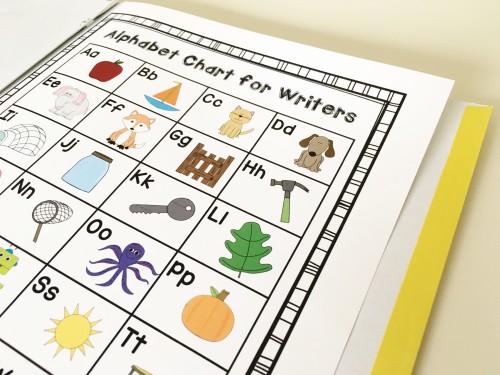
I’ve also found that incorporating movement is extremely beneficial when teaching letter sounds. My phonics program, From Sounds to Spelling, has videos with a special chant and movements for the alphabet.
Since teaching letter sounds requires a lot of repetition, here are some additional activities to help keep things fresh and interesting:
- Trace sandpaper letters while saying the letter sound
- Use one finger to trace a letter in salt or sand (see my photo below – I use travel soap boxes to hold salt for tracing)
- Trace letters in shaving cream (bonus – this cleans the tables!)
- Do “letter hunts” by searching for and cutting letters out of old newspapers and magazines
- Have students sort small objects by letter sounds
- Have students use Starfall or apps to squeeze in a little extra independent practice
- Pair students up (one struggling reader with one child who knows her letter sounds) and have them practice flashcards together – or create a timed PowerPoint presentation that automatically goes through all the letters while students practice
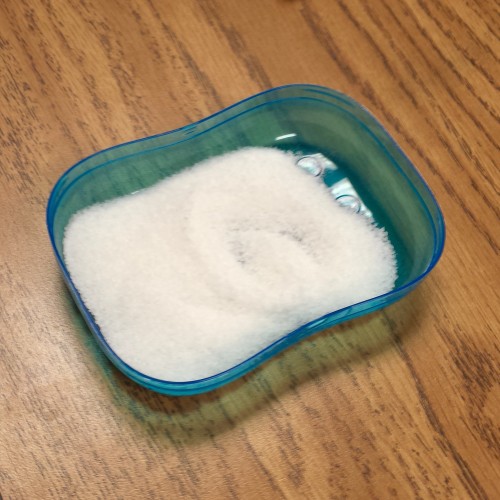
CVC Word Interventions
Reading CVC (consonant-vowel-consonant) words is the next step after students know their letters. However, I recommend having students work on CVC words AS they are learning their letters, too!
Showing students how to blend sounds to read a word actually helps improve their letter knowledge! They may only be able to read words with your help, but that’s okay – you are building skills so they can eventually do this on their own.
Meanwhile, you’ll also want to work on building the phonemic awareness skill of blending – practicing putting together sounds WITHOUT any letters involved. For example, you say the sounds /t//ŏ//p/ and the child says “top.”
If they can’t blend sounds without any letters involved, then they’re not going to be able to read CVC words on their own.
This blending sheet is a hands-on tool that helps students practice blending sounds AND practice left-to-right directionality.
To use it, say 3 sounds aloud, and model how to touch each dot as you say each sound. (Example: /m//ă//t/) Have the student(s) repeat all 3 sounds (/m//ă//t/), and then slide their finger across the arrow as they say the entire word (mat).

This blending sheet is included in today’s download, and you can read more about other phonological awareness interventions in this post.
With time and practice, students will gain more independence in reading CVC words independently. When students are first reading words on their own, you might start with 2-sound words. VC words like “at,” “in,” “up,” and “on” are typically easier for students to read than CVC words.
Words that begin with continuous sounds are also typically easier for students to read when they are first starting to decode. To learn more about that, check out this video.
As students grow in their letter knowledge and blending abilities, they’ll eventually be ready for simple decodable texts with CVC words. Decodable texts are carefully written to include phonics skills students have already been taught, so the words in them aren’t too hard
This set, for example, is perfect for kids who are just starting to decode and can’t manage texts with tons of CVC words yet.
If you find that students are guessing at words or not reading all sounds in a word, present similar words (that all start with the same letter) to a child, and have her choose the word that matches the picture. The clip-on cards from this post’s freebie are an example of this type of activity:
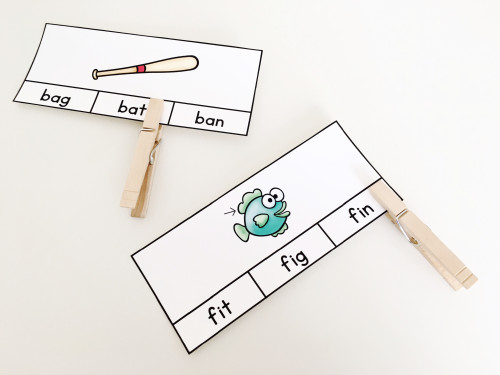
Spelling CVC words will help students learn to read them more effectively, too! Sound boxes are a great tool for this. In the photo below, you’ll see two types of sound box spelling activities. On the first sheet, students must fill in only two letters. On the second sheet, they have to spell the word entirely on their own:
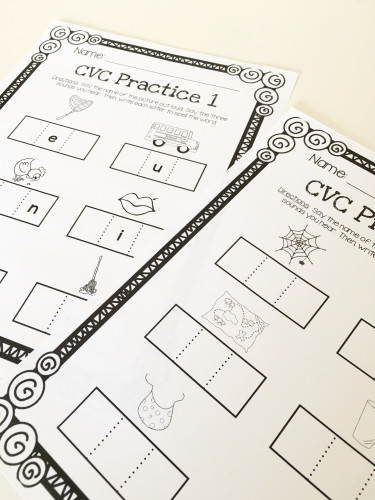
All of the materials above are included in today’s free download (sign up to receive it here if you haven’t yet!)
Digraphs and Blends Interventions
When a student is struggling with digraphs and blends, I try to determine if they are hearing the actual sounds the way that they should be. If, for example, a child cannot correctly pronounce the /sh/ sound, this can sometimes make it difficult for her to hear and read this digraph.
I like to start by using lots of picture activities to help students practice hearing and saying words with digraphs and blends – before I ask them to spell or read words with digraphs. In your download, for example, you’ll find a picture sort that helps students distinguish between the sounds “ch” and “th.”
For more strategies on helping students who struggle with consonant blends, check out this video!
Vowel Interventions
English vowels can be so challenging! When a child is struggling with short vowels, I tell him to look at my mouth while I pronounce them. We practice saying each sound, paying attention to how our mouths look. This helps students learn to differentiate between short vowel sounds. For more short vowel ideas and free activities, check out this post.
When we move onto long vowel sounds, I anticipate a lot of confusion in students. It takes time to learn all the different long vowel spelling patterns! Anchor charts and vowel “cheat sheets” can be helpful, particularly for students who struggle with vowels or have memory issues.
This resource has everything you need to create a little booklet of vowel sounds that students can refer back to.
Learning vowel spelling patterns takes time and lots of practice. For more ideas for teaching vowel teams, check out this post.
Inflectional Ending Interventions
Inflectional endings include -s, -es, -ing, and -ed. I’ve seen a lot of kids struggle to consistently pay attention to word endings, so specific inflectional endings activities can be beneficial.
The strategy that’s worked best for my students (in addition to lots of word reading and word building practice) is this:
- When reading a word with an inflectional ending, cover up the ending with your finger.
- Read the base word.
- Uncover the ending.
- Read the whole word!
It’s simple, but it really works!
To learn more about teaching students to divide up and read all kinds of multisyllabic words, check out this post.
Conclusion
This was a lot of information, but I hope it was helpful!
The bottom line is this: When students struggle with phonics, we need to make sure that they are getting a good core of instruction, as well as receiving extra help. Some students simply need more time and review to master phonics skills and build their decoding and reading fluency.
Update: This blog post series is now complete! You can read the rest of the posts here:
What Causes Decoding Difficulties in Beginning Readers, and What Can Teachers Do About It?
How To Analyze Running Records (And Get a Ton of Valuable Information About Your Beginning Readers!)
How to Teach Decoding Strategies to Struggling Readers
Phonological Awareness Interventions for Struggling Readers
How To Give Struggling Readers More Practice Time Through Volume Reading
Resources:
Dougherty Stahl, K. A. (2014). New Insights About Letter Learning. The Reading Teacher, 68(4), 261-265.
Disclosure: An Amazon affiliate link is included in this post.

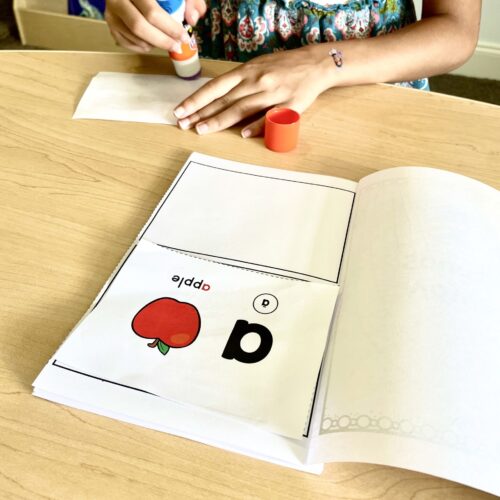
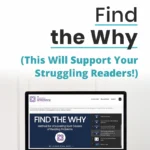


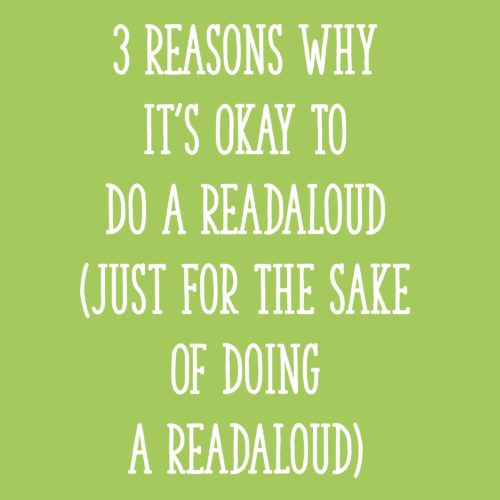
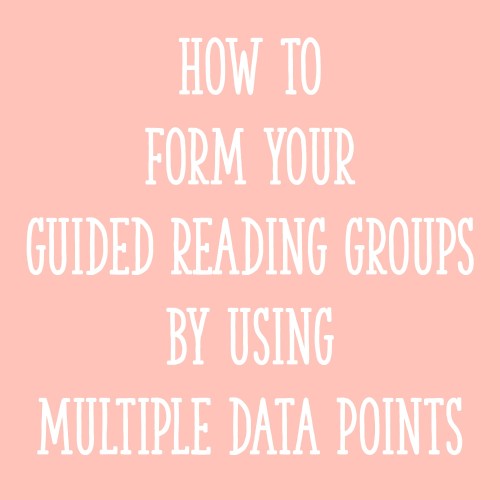
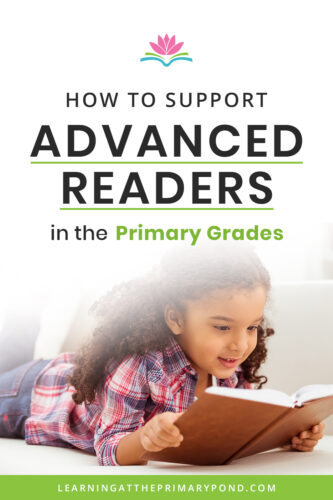





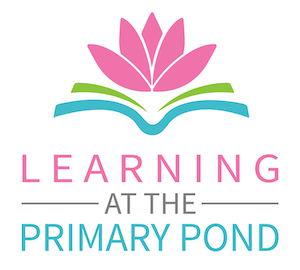
I would like yor free stuff thanks.
Hi Kitty! If you scroll through the post, you’ll see that there are a couple different places (small gray boxes) where you can put in your first name and email address – just fill it in there, and it’ll automatically be sent to you. I hope you enjoy the materials! Alison
Hello! I’ve filled in this information a couple of times but have not received your wonderful materials.
Uh oh! So sorry about that! Email me at LearningAtThePrimaryPond@gmail.com and I’ll send them to you directly. 🙂
Alison
Thank you. Really appreciate your help. I am a teacher and there are so many children struggling with reading.
You’re so welcome, Ruby! Thanks for reading and commenting.
Alison
Thanks for sharing
Hi,
I loved reading your series. I am an intervention specialist and would love to use some of your materials. I already signed up and received your intervention toolkit. DO I have to sign up each time I want a resource from your reading series?
Thanks
Hi Debby! No, all the materials (in this particular series, anyway) should be included in that original freebie. You would have to sign up again for other freebies (i.e. writing folder tools). Sorry for the confusion!
Alison
I love your ideas and resources. I am really excited to try these strategies today. Thanks so much for sharing!
I would love to have a copy of the free materials! Thank you!
Hi Tara! Just put your information into the boxes included in the post, and they will automatically be sent to you. 🙂
Alison
How can I sign up?
Hi! There should be little boxes within the post where you can put in your email address. The materials will be sent to you automatically! 🙂
Alison
Hi Alison! I was wondering do you have anything in your TPT store with phonics mini lessons or guide for how to teach phonics to your entire class throughout the year
Hi Emily! I do not have any phonics minilessons / curriculum. Sorry about that!
Alison
I have an emergent reader who can stretch out simple cvc word such as /d/ /o/ /g/ correctly, but will subsuitie the ending sound to another sound such /t/ then say the word /d/ /o/ /t/. This happens roughly 50% of the time. The student is 5.4 years old, has explicit reading instruction and has difficulty with retention of letter sounds and letter identification. When she hears the word /d/ /o/ /g/ she identify the word as dog, so her errors are visual in nature. She also had difficulty with rhymes. 1) Should I be concerned, 2) What strategies do… Read more »
Hey Vicki! I think this is relatively common – when you were talking about substituting the ending, do you mean when she is reading a word or turning “dog” into /d/ /o/ /g/? I’m thinking you meant reading one, but I want to be sure I understand. You can also email me at Alison@LearningAtThePrimaryPond.com.
Thanks!
Alison
How do you get students past the sounding out every word?
Hey Mary! Teaching chunks like -ing or word families like -at is helpful. The more sight words they learn and the more they read, the more fluent they become, too.
Alison
Hey Ms. Alison 🙂 Thank you very much for sharing your expertise. 🙂 This will help a lot.
I would like free materials. My focus is on struggling children in schools.
Hey there! If you scroll down a bit on the main page, there are several links to blog posts that include freebies. 🙂 You can also sign up for my email list so that you stay up to date on free items and workshops.
Hi, how can I get these great resources?
Hi Mariana! If you go to the bottom of the post, under the “Conclusions” section, there are two boxes that ask for your first name and email address. Just complete those sections and you will be sent access to these resources! 🙂
when I put my name in the boxes it never sent me anything for the free downloads.
Hey Amber! So sorry about that. Try this link instead: Intervention Toolkit